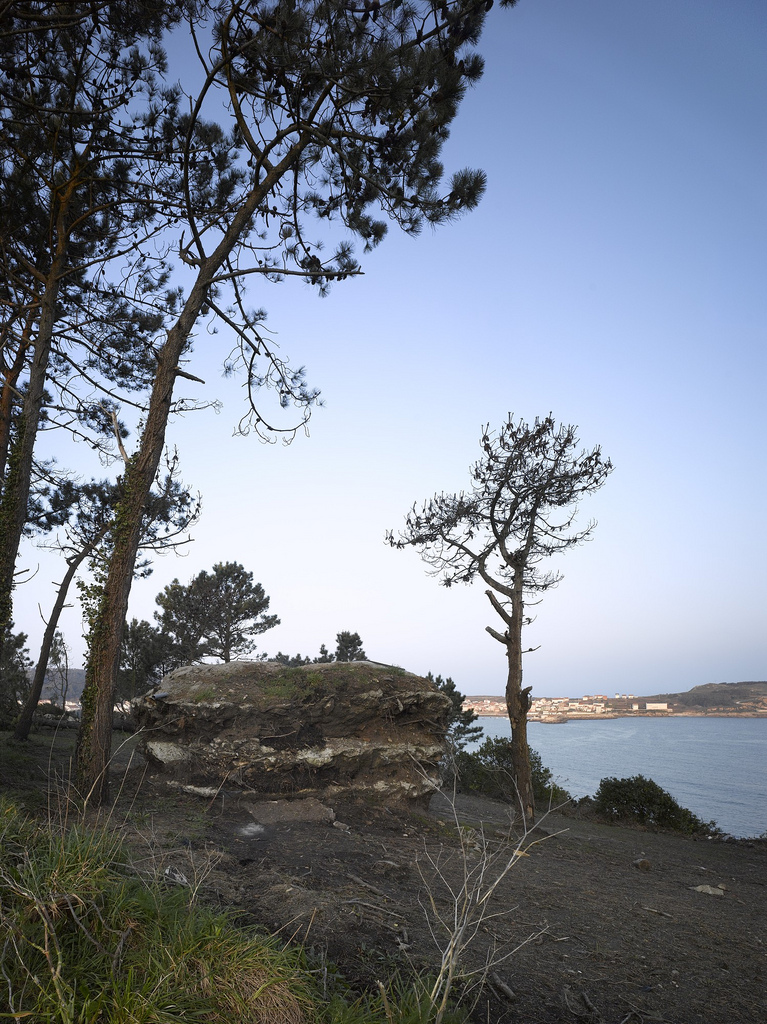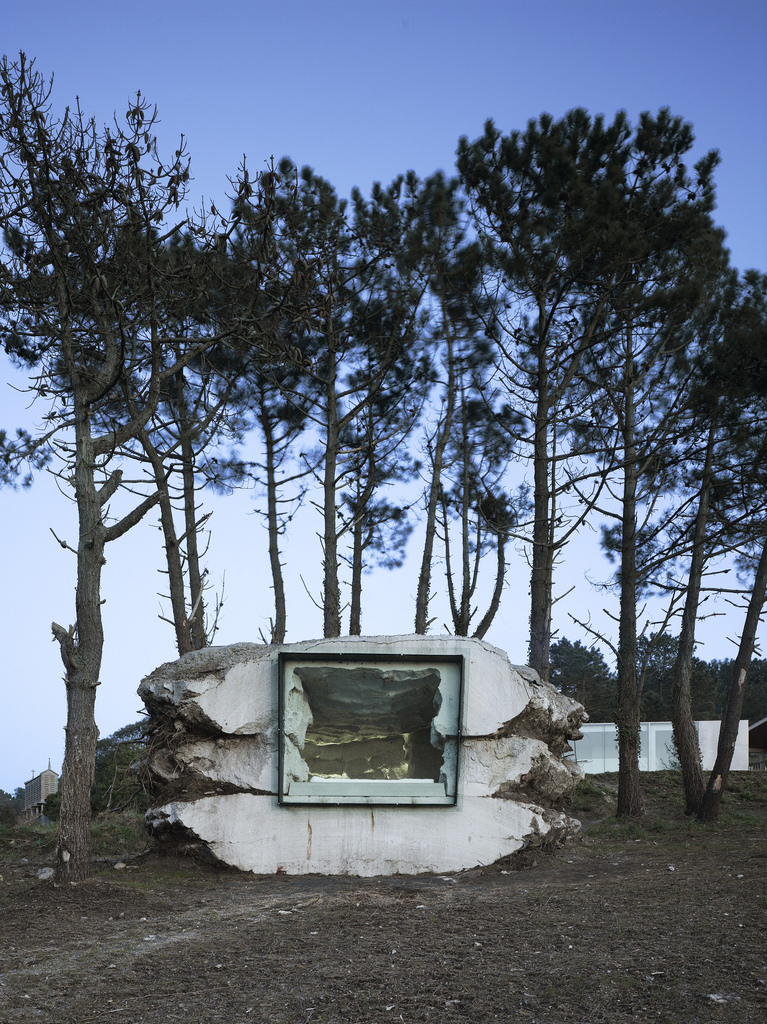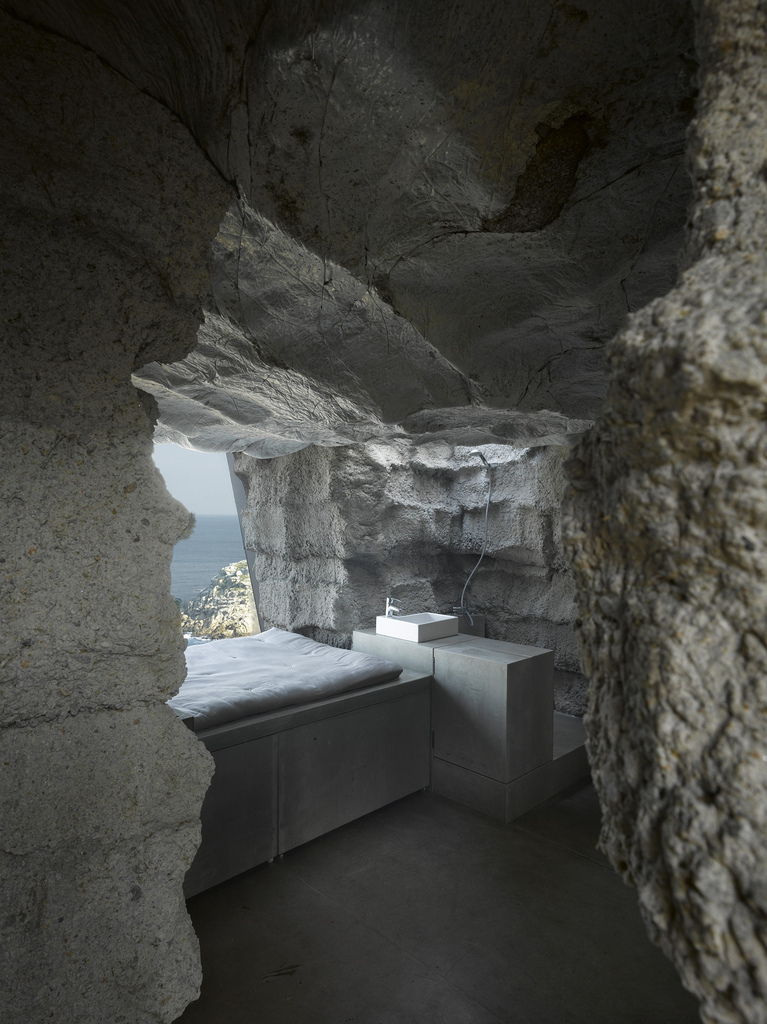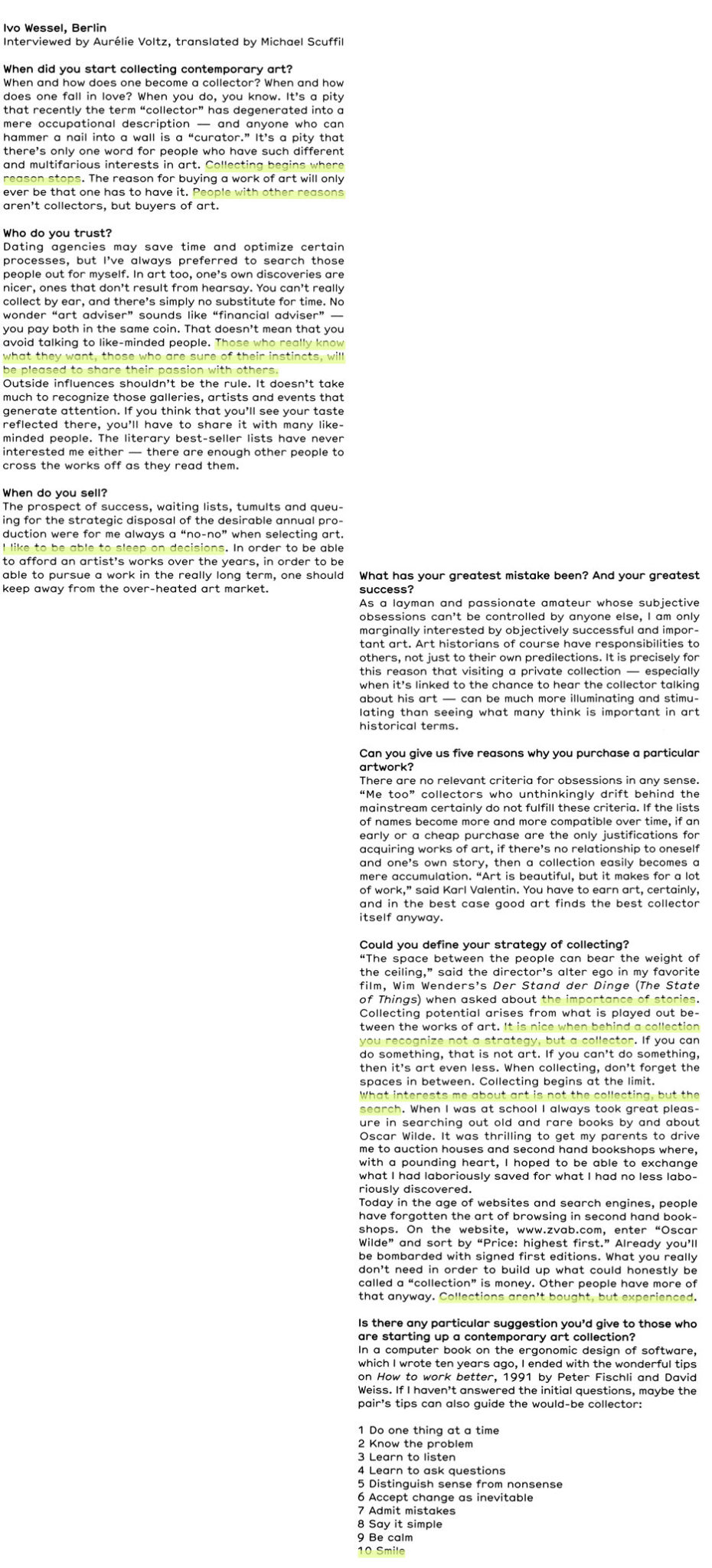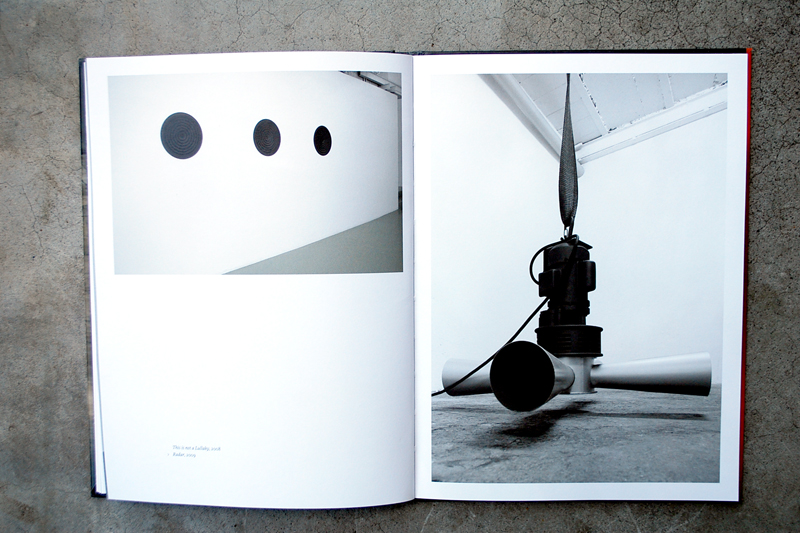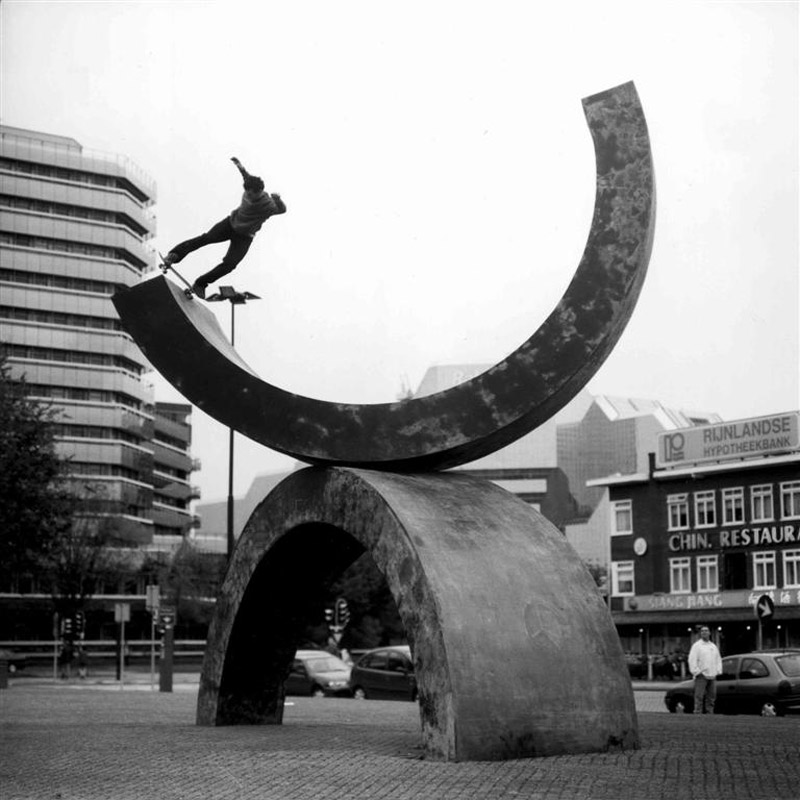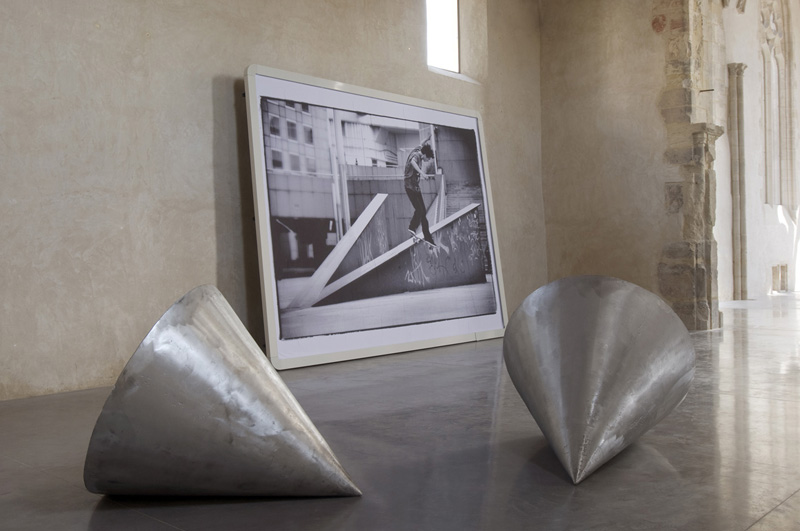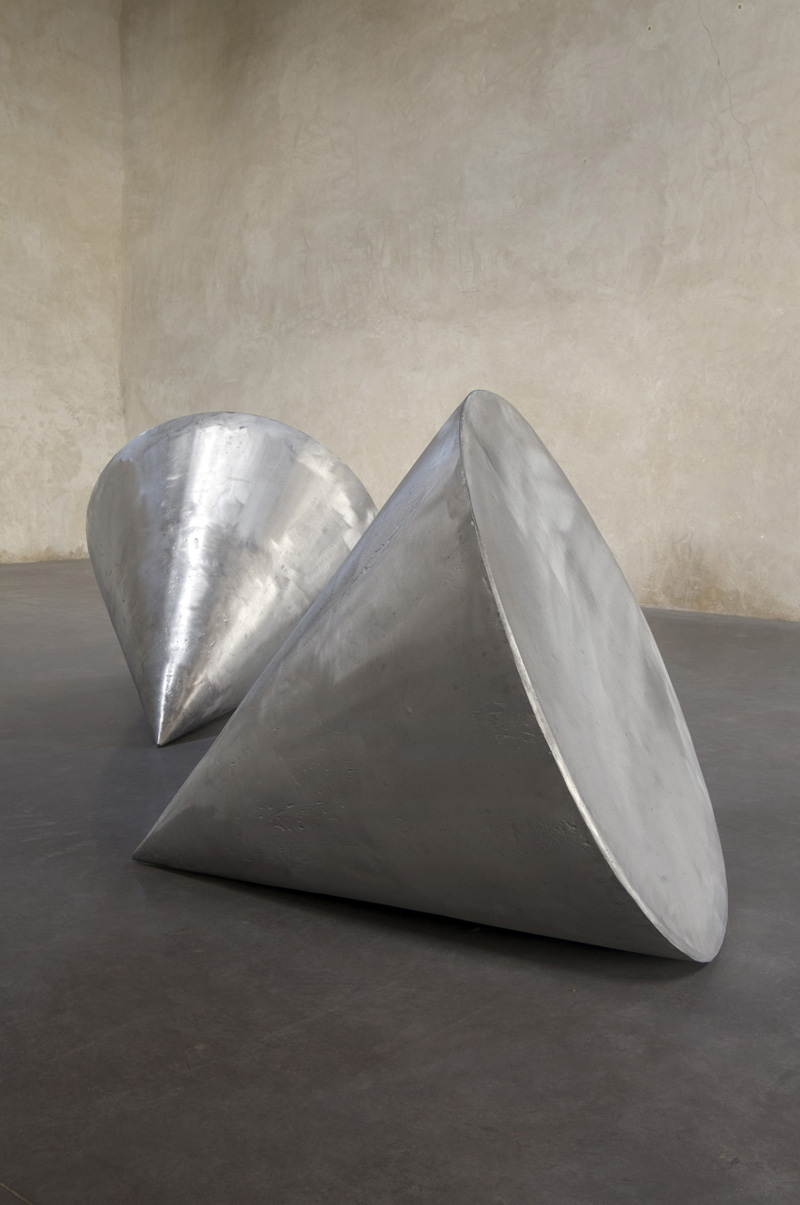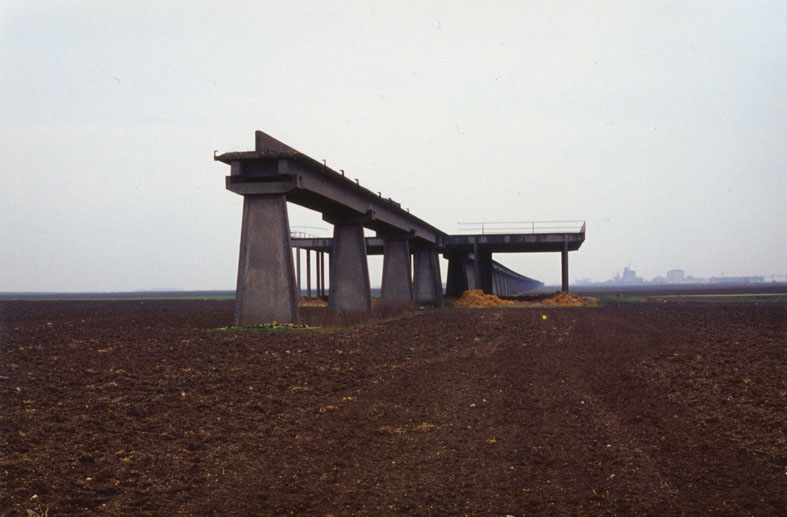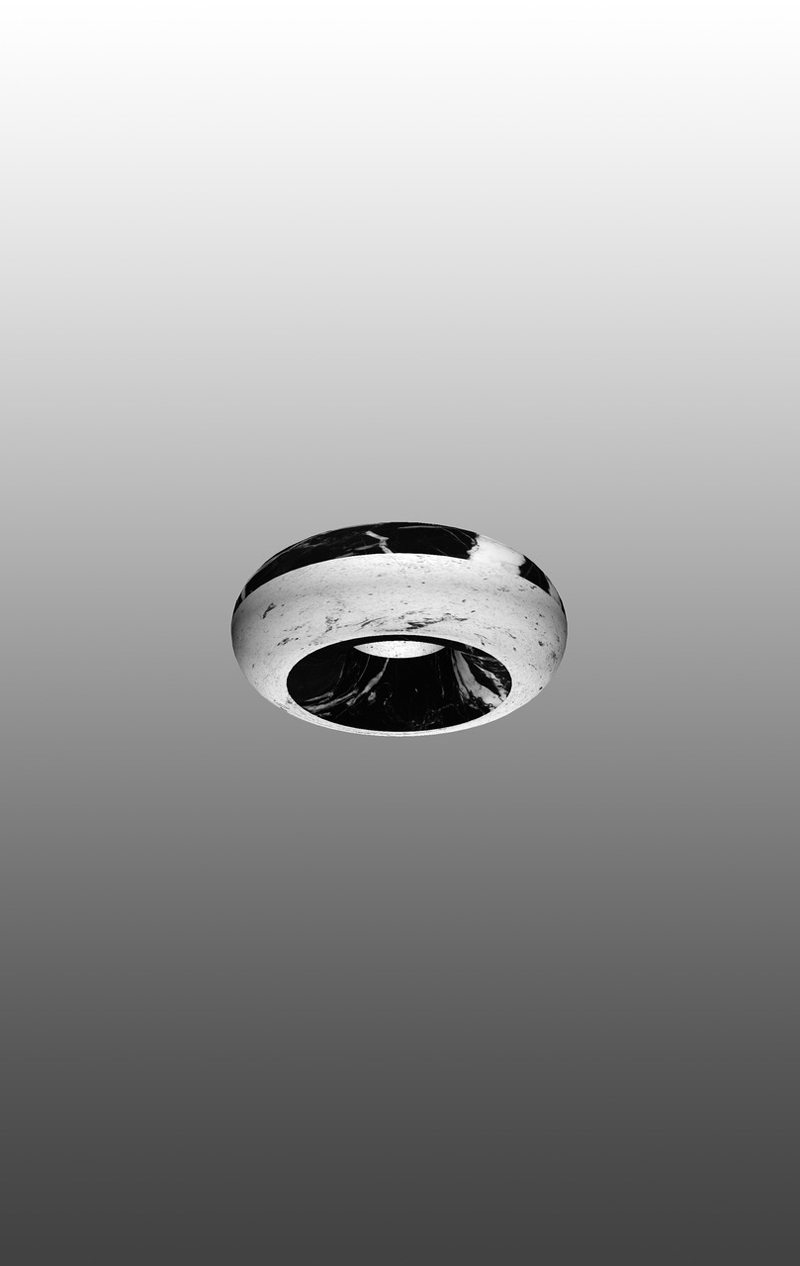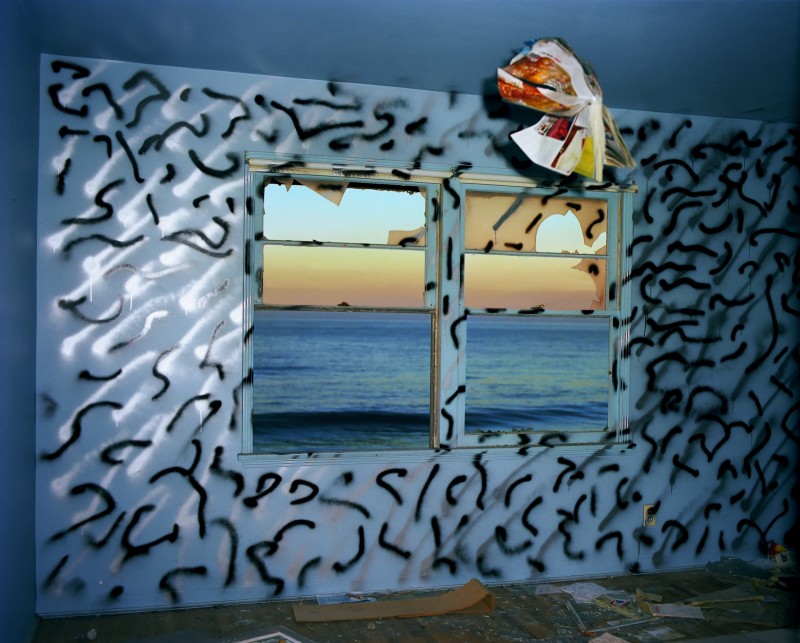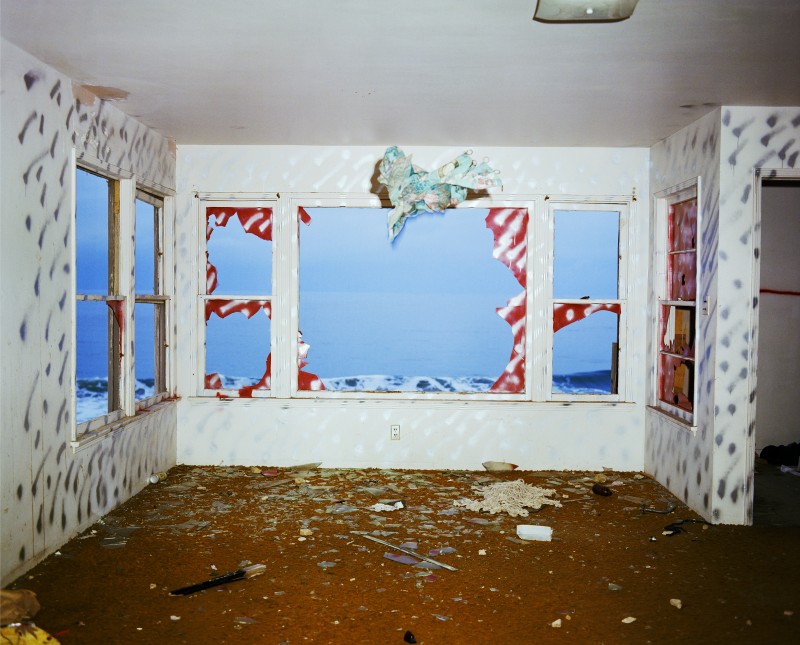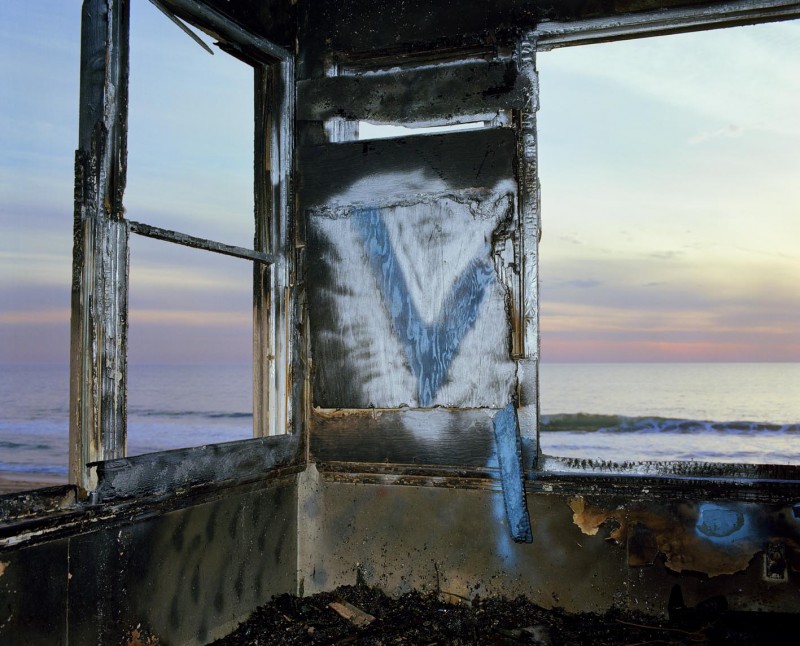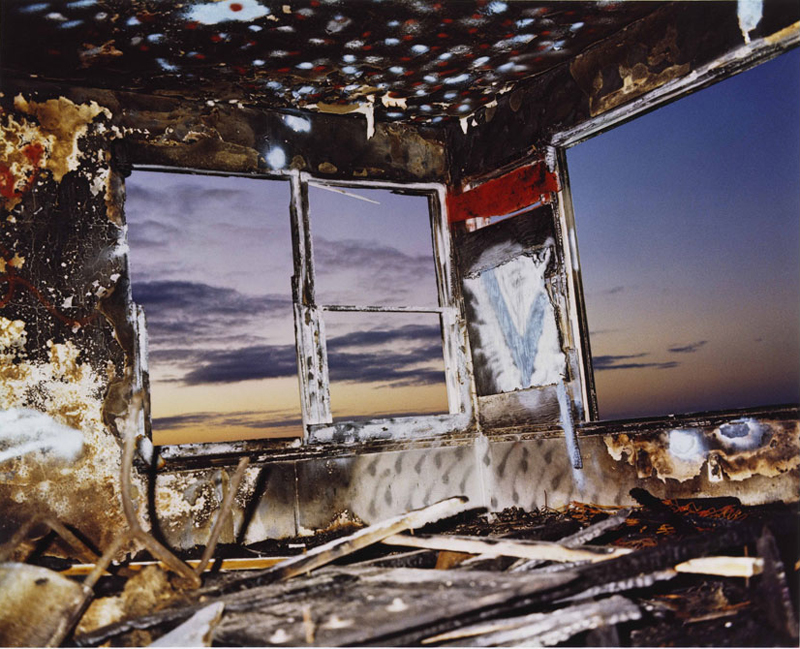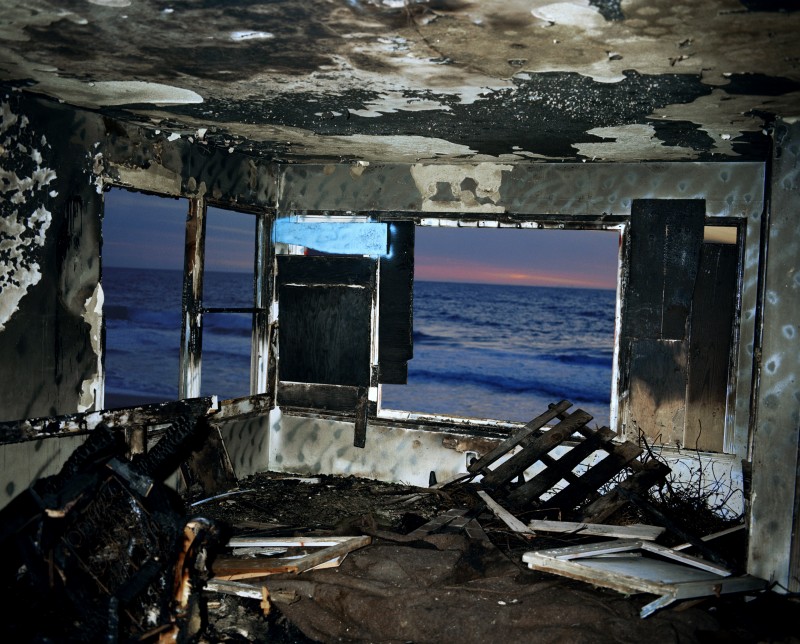Sophie Ristelhueber
Eleven Blowups #10. 120 x 146 cm. 2006
–
Implying a complete personal engagement and a real experience of the land, SOPHIE RISTELHUEBER‘s work borrows from journalism its tools (photography) and one of its major themes (war), but bends them to the processes of art: her oeuvre is not built around a documentary project to represent, but, starting from an aesthetic project, to interrogate the notion of trace/scars, on the body and on the place.
SOPHIE RISTELHUEBER’s picture of a bomb crater, one of a series representing the scars inflicted by conflict, is a reconstruction involving several images – a technique that has earned her a place on the shortlist for the Deutsche Börse Photography Prize 2010.
The series titled Eleven Blowups came about after televised pictures of a huge hollow in the ground made by the bomb that killed the prime minister of Lebanon, RAFIK HARIRI, in Beirut in 2005 lodged in her mind. Coincidentally, she said, she had been working on the possibility of doing a story on Iraq but had found that, at the time, “it was impossible for a non-national to operate in my profession there.”
After that she visited the Reuters agency in London and looked through footage of craters from the years 2003 to 2006. She selected and bought one image. ‘Working on stills, I put together my own pictures using computer techniques to reconstruct the scene.’ She employed a technician to create a maquette, a computer simulation of a bomb crater which incorporated details of her own pictures of rocks and stones that she had shot on territories at war (Beirut in 1982, Turkmenistan in 1997, Syria in 1999, Iraq in 2000, West Bank in 2003-2004).
Rather than focusing on the geopolitical meaning of a particular conflict, RISTELHUEBER is engaged with the ambiguities of what she calls the “terrain of the real and of collective emotions.”


